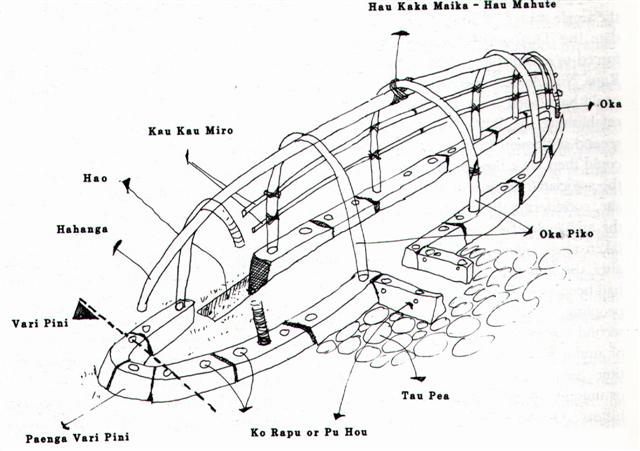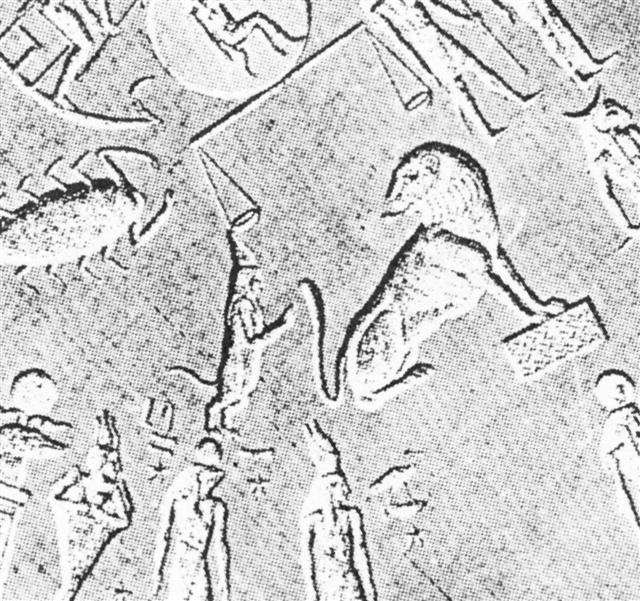2. But a side crater is a hole in the side and by contemplating the meaning of the holes in the sides of the entrance stones of our hare paega we can understand that both Te Manavai and Te Poko Uri (Rano Kau) could be characterized as 'side craters':
The 'side craters' presumably correspond to Pu Hou, holes through which the living spirit (manu rere - or tuli as they evidently said on the atolls of Tokelau) of Old Sun reenters after his canoe voyage over the sea (corresponding to the 4 periods which in the Dendera zodiac north of the equator were beginnig with Aquarius and ending with Scorpio). Yet, there are Pu Hou holes also in the stones on the other (first) side of the entrance, and therefore there are 4 stones with side holes. The first stone could correspond to Te Pu Mahore, a name which evidently refers to a hole:
The silver-coloured fish mahore should refer to Moon rather than to Sun (who is golden). The first stone of the entrance indeed has a Sign of Moon, viz. instead of the normal top holes there are 2 such close together and of different sizes. A pair cannot refer to Sun whose face always is the same. But Te Pu Mahore is located in a Wednesday and should therefore be a station of Mercury, who also has the colour of silver. This is probably the correct reading. Quick in quicksilver refers to the strange characteristic of this metal, viz. not be a solid but to be a fluid (moving instead of being 'lifeless'). Probably this characteristic explains why he is 'mad', behaving strangely for a man, behaving like a woman (or a child). There is no better planet to initiate an entrance sequence with, there is no other planet with this unclear character, not yet differentiated into man or woman. Also the Dendera sequence has Mercury at the beginning, the person with a fool's cap:
Like the Old Lion (Jupiter) he has a tail, and his legs also indicate an animal. His cap is touching the cup of Libra, a sign of his double sex. Thus we can understand why a fool's cap should have the conical shape - to function as a reminder of Libra, the unstable double sign in the zodiac. Finally, the little top hole in the first of the entrance stones is very close to the normalsized hole, and the planet Mercury is very close to Sun. |
|||||||||||||||

